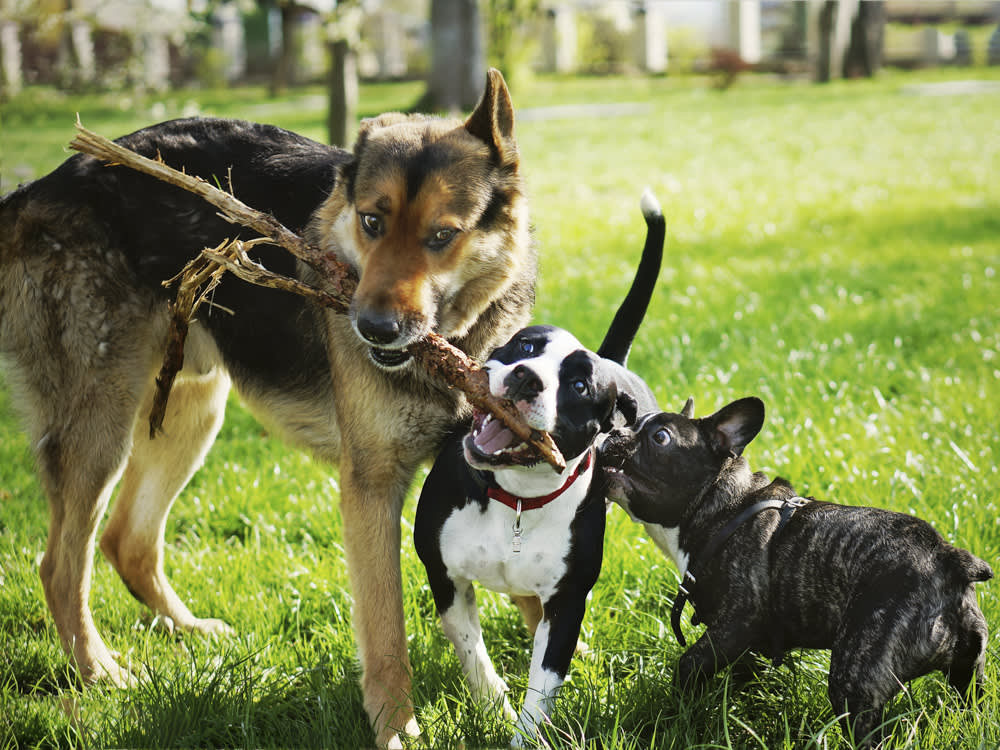Distinguishing between dog play and fighting is observing their body language and vocalizations. Playful dogs show loose and relaxed body movements, with frequent pauses and role swaps.
On the other hand, fighting dogs display tense bodies, growling, and aggressive postures. Understanding the difference between dogs playing and fighting is crucial for pet owners and dog enthusiasts. Recognizing the signs enables better intervention in case of potential conflicts, as well as fostering a safe and enjoyable play environment for the dogs.
By understanding the cues and behaviors indicative of play and aggression, one can create a harmonious and stress-free interaction among dogs, promoting their physical and emotional well-being. Additionally, this knowledge can help prevent any potential injuries or misunderstandings during canine interactions, thus ensuring a positive and enjoyable experience for both dogs and their human companions.

Credit: www.thewildest.com
Understanding Canine Behavior
Understanding the difference between dog play and dog fights is essential for pet owners and dog professionals. Key indicators of dog behavior can provide valuable insights into their intentions. Canine body language cues can indicate whether the interaction is friendly or aggressive. Pay attention to ear position, tail movement, and overall posture. Vocalizations also play a crucial role in interpreting canine communication. Play signals such as relaxed body movements, bowing, and playful barking are positive signs. Conversely, aggressive signals like stiff posture, raised fur, and growling warrant caution. By understanding these indications, dog owners and handlers can better navigate canine social interactions and intervene when necessary.
Interpreting Dog Play Behavior
Recognizing playful body language: When observing dog behavior, it’s vital to look for friendly gestures such as relaxed body posture, loose and wiggly movements, and a soft face. Tail wagging is a clear sign of excitement and playfulness, especially when it’s broad and not stiff. Play bows are a common signal between playful dogs, indicating a desire to engage in friendly play.
Understanding vocal cues: Happy barks and play growls are common vocalizations during dog play. These sounds are typically high-pitched and accompanied by a relaxed body language, signaling enjoyment and playfulness. Excited yips are often heard during enthusiastic play, reflecting the dog’s excitement and eagerness to engage. Recognizing these vocal cues is crucial in discerning playful interactions from potential aggression.
Differentiating Play From Aggression
Play behavior can be distinguished from aggressive behavior by observing the dog’s body language. When playing, dogs will exhibit a loose and relaxed posture. On the other hand, aggressive dogs may display a stiff posture, accompanied by snarling or lip curling and intense eye contact. Vocalizations can also provide insight into the nature of the interaction. Snarls and deep growls are indicative of aggression, while high-pitched barks may signal playful excitement. Additionally, whining during a fight indicates distress rather than playful engagement.
Frequently Asked Questions On How To Tell If Dogs Are Playing Or Fighting
How Can You Tell The Difference Between A Dog And A Play Fight?
In a play fight, dogs have loose, relaxed body language and take turns being on top. A real fight involves tense body language, growling, and aggressive behavior. Watch for clear warning signs.
How Do You Tell If A Dog Is Being Aggressive Or Playing?
An aggressive dog may show stiff body language, growling, and intense eye contact. During play, a dog will have a looser body, wagging tail, and bouncy movements. Always monitor their behavior for safety.
How Rough Is Too Rough For Dog Play?
Rough play is too much if it causes injuries or distress in the dogs. Overly aggressive behavior or signs of fear mean it’s time to intervene. Monitor their body language and stop the play if it appears too rough.
How Do You Tell If A Dog Is A Fighting Dog?
A fighting dog may exhibit aggressive behavior, including excessive barking, growling, and a strong prey drive. They may also show signs of training for fighting, such as scars or cropped ears. It’s crucial to report any suspicious behavior to authorities.
Conclusion
Understanding dog behavior is crucial for responsible pet ownership. By recognizing signs of play and aggression, we can ensure the safety and well-being of our furry friends. By being observant and knowledgeable, we can foster positive interactions and prevent potential conflicts.
Ultimately, being attentive and informed will lead to a harmonious relationship between dogs and their human companions.



